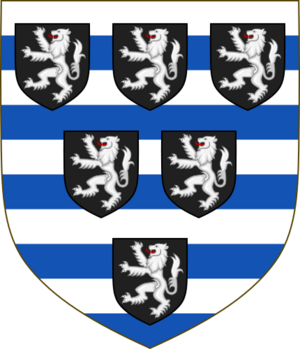Robert Cecil (1670–1716) facts for kids
Robert Cecil (born around 1670 – died 23 February 1716) was an English politician. He was a member of the Whig political group. He served in the English and British Parliament between 1701 and 1710.
Early Life and Family
Robert Cecil was born around 1670. He was the second son of James Cecil, 3rd Earl of Salisbury and his wife, Lady Margaret Manners. His family was well-known and important in England.
In 1690, Robert Cecil married Elizabeth Hale. She was a widow from King's Walden, Hertfordshire. It is said that he once fought a duel for her. Elizabeth was the daughter of Isaac Meynell. Together, Robert and Elizabeth had three sons and two daughters. One of their sons, Charles, later became a bishop. Their daughter Margaret married Sir Robert Brown.
Political Career
Robert Cecil was interested in politics from a young age. He tried to become a Member of Parliament (MP) for Hertfordshire in 1695, but he did not win. He tried again in 1697, but was still unsuccessful.
In 1701, he finally became an MP for Castle Rising. This was thanks to the support of the Howard family. After this, in 1702, he was given an important job. He became a commissioner for trade and plantations. This meant he helped manage England's trade with other countries and its colonies. He held this job until 1707.
In 1708, Robert Cecil was elected as an MP again, this time for Wootton Basset. He was known as a Whig, which was a major political group at the time. As a Whig, he voted for important laws. For example, in 1709, he supported a law to allow people from Palatine (a region in Germany) to become British citizens. In 1710, he also voted to impeach Dr. Sacheverell. Impeachment is a process where a public official is accused of wrongdoing. Robert Cecil did not run for election in 1710.
Later Life and Health
Robert Cecil was known for being a very large man. Reports from 1704 said he weighed about 30 stone (which is around 190 kilograms or 420 pounds). He often had health problems. He passed away on 23 February 1716. He left his properties to his wife, Elizabeth.


